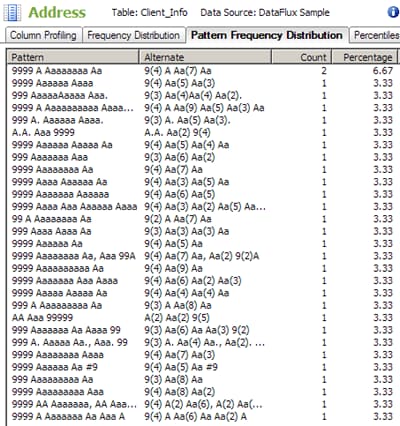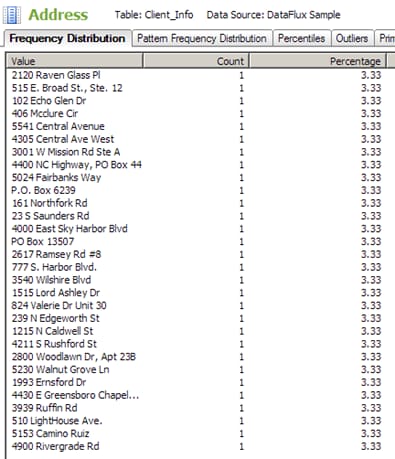
DataFlux Data Management Studio 2.5: User Guide
You can review the pattern frequency distribution of the values that are contained in a field. You can use this information to identify the variety of data patterns used for similar data. Then, you can decide which patterns to use.
Prepare and run a pattern frequency distribution analysis in the Properties tab for a profile report. Then, you can review the results in the Report tab. Perform the following tasks in an existing profile:
You can prepare and run a pattern frequency distribution analysis in the Properties tab. Perform the following steps:
You can review the results of a pattern frequency distribution analysis in the Report tab of a profile report. Perform the following steps:

By default the Pattern Frequency Distribution tab is optimized for Latin-1 data. It uses the following rules to represent the pattern of characters in the data:
For example, the pattern A.A. Aaa 9999 corresponds to the following address in the data: P.O. Box 6239. You can double-click a row in the Pattern Frequency Distribution tab to see the underlying data. Of course, you can click the Frequency Distribution tab to see the frequency distribution for all of the data, as shown in the following display:

To generate a visualization, right-click anywhere in the Frequency Distribution tab or Pattern Frequency Distribution tab and select Visualize.
|
Documentation Feedback: yourturn@sas.com
|
Doc ID: dfU_T_ProfileFreqDist.html |